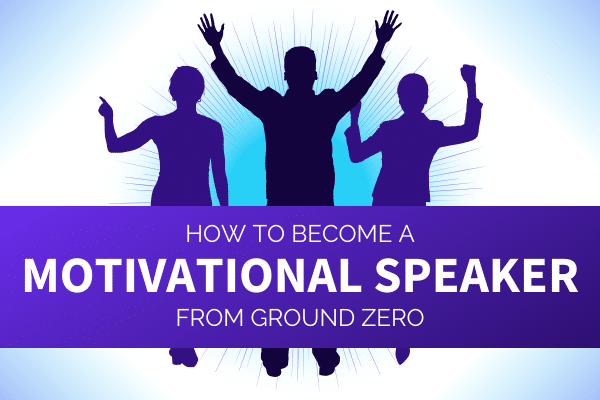When it comes to fame, now more than ever, the ways to jump from “regular” to “recognizable” are endless. In fact, thanks to social media, if you have something inspiring to say, it may only take one video to garner your first taste of attention. However, as a Spiderman fan, I can’t help but think, considering these digital resources, it’s important to remember that with this power comes great responsibility. Even if you’re able to gain attention for doing something dumb, you can make a far greater and more positive impact by using your platform to inspire, encourage, and motivate your audience. That’s where our main topic of this blog comes in: learning how to become a motivational speaker.
All in all, it isn’t hard to see the appeal of motivational speaking. No matter where you come from or your area of expertise, having control of the stage not only allows you to share your experiences and provide encouragement to others. It also allows you to provide insights, based on those experiences. That way, your audience can learn from your successes and failures and, hopefully, make it to happiness more quickly than you did. So, let’s talk about that, and get right into the basics of becoming a motivational speaker.
Build your personal brand and speaking style.
First and foremost, you’ll need to define your personal brand. Essentially, your personal branding is a visual representation of your stage presence. It comprises the visual components of your motivational speaking persona as well as the odds and ends that event organizers use when you speak for them. All in all, when building your personal brand, there are plenty of things you can do to build it, both in-person and online. Here, we’re going to focus on the three broadest categories of how to become a motivational speaker, in terms of speaker branding.
Writing Your Speaker Biography
First, write your speaker biography. Like your bio on a social media platform or website, your speaker bio tells event organizers and audience members who you are, where you come from, and what you specialize in. Although it is useful in your digital brading (website, social media profiles, eSpeakers profile, etc.), it can also be useful at events, as audience members may be looking for a speaker for their own event or company meeting. This is especially useful if you are working on motivational speaking for associations.
That said, no matter who your ideal audience is, your speaker bio should include four things: your credentials, your experience (as a speaker and in your focus industry(ies)), some personal details, and a solid ending. In short, when learning how to become a motivational speaker, your first task is summing up you, as a person. Where did you start out? What led you to pursue a career as a motivational speaker? What motivates you to continue speaking now, and who needs to hear your message most? All of these are questions your bio should answer.
For additional details about writing a bio and for examples, to get you started, check out the articles below:
- “Speaker Bios: Writing A Speaker Bio That Captivates Event Planners In 5 Easy Steps”
- “10 Speaker Bio Examples That Will Inspire You To Update Yours”
Crafting Your Promise Statement & Value Proposition
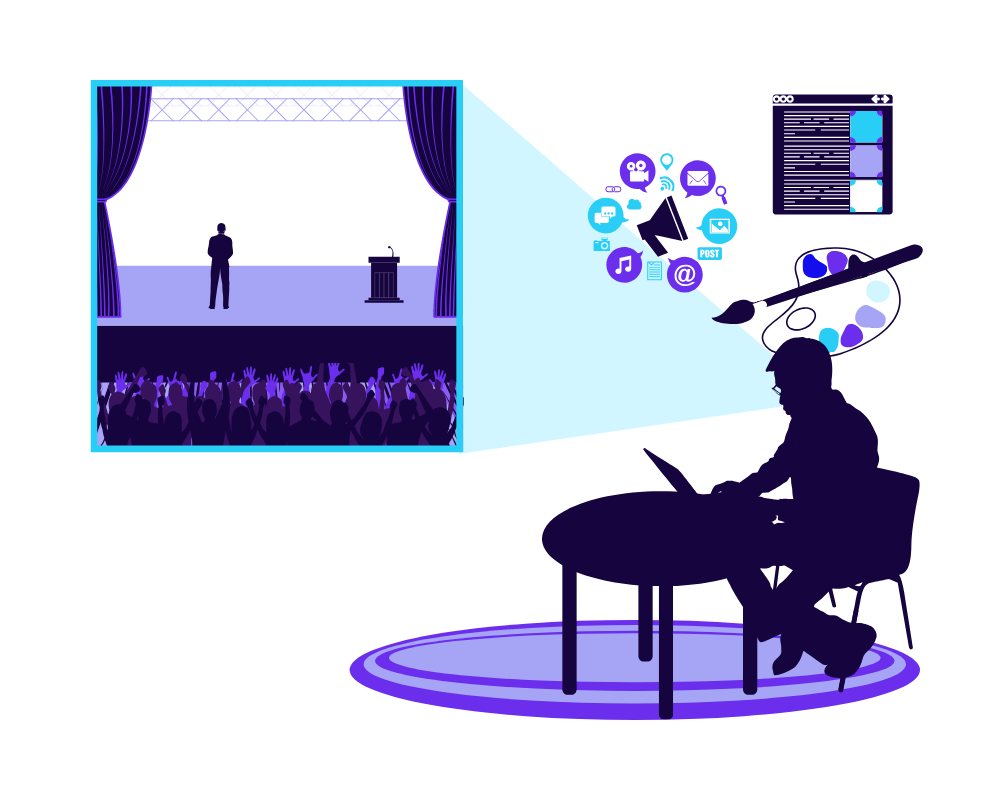
Next, after completing your bio, move on to crafting your promise statement and value proposition. The first of these, your promise statement, is a short and sweet summary of the results your clients achieve from hiring you for their event. Ideally, it also includes an allusion to how you achieve these results through your work. Conversely, your value proposition builds off of your promise statement to expand upon these results and services. Unlike your promise statement, however, your value proposition can be several sentences and should communicate more detail and process-oriented language.
As a general rule, a good speaking business uses both of these components in its sales process. Your promise statement, being short and eye-catching, is useful at the top of lead magnets or resources for event organizers as well as the hero area of your website. On the other hand, your value proposition is a staple for further down the homepage. In other words, your promise statement initially gets the reader’s attention. Then, your value proposition piques their curiosity, prompting them to contact you and determine if you’re a good fit for their event.
To learn more about crafting your promise statement and value proposition, see our previous guide, “5 Key Components Of The Perfect Promise Statement”. I also highly recommend checking out the websites for Kindra Hall and Jacob Green. Both their promise statements and value propositions are amazing. 👌
Designing Your Personal Brand
The last component of your personal brand is the design. In total, designing your personal brand combines a few key elements. These include the fonts, colors, and style of your brand collateral as well as the general rules you follow to keep your branding consistent, i.e. your style guidelines. Generally, there are two ways to tackle these areas and make sure they both (a) don’t clash with each other and (b) convey the tone you want to share with your audience. The first is to hire a graphic designer to build your brand for you. This is a great option if you have the budget for it and if you aren’t artistically-gifted yourself. The second option, if you are comfortable with art and design, is doing it yourself. With this route, I’ve found it’s easiest to choose colors, then fonts, then build your logo and icon from there.
Design Resources
- As far as colors go, 99 Designs’s color guide gives a great overview of the emotions conveyed by each color. That way, you know the primary color you’re using works with your message.
- From there, to build a color palette off of this primary color, I recommend Canva’s color palette generator or the collection at ColorPalettes.net.
- For fonts, opt for clean and modern fonts and try to balance font weights, so that your headings stand out from any body text on your site or print materials. For the most part, using a font pairing guide, such as Canva’s guide to choosing a font, can be helpful. Just make sure to avoid overused fonts, the most common of which are Impact, Comic Sans, Bradley Hand, Copperplate, Bank Gothic, Brush Script, and Papyrus.
- Lastly, for logos and icons, the goal is to create an image that combines the colors of your brand with your message. Essentially, it’s a visual representation of who you are and should relate to your main topic in some way. For this, hiring an artist through a freelancing platform like 99 Designs, Fiverr, or Upwork can be the easiest way to go.
Tackle the “business” part of a motivational speaking business.
At this point in learning how to become a motivational speaker, you know what your message is and what your brand will look like. All that’s left to do, in terms of preparation, is build the “business” part of your “speaking business”. This process includes all of the one-time processes, like registering your speaking business. However, it also includes what will become your day-to-day admin tasks that keep your business operational. Because of this interconnectivity, it’s important that you invest sufficient time and energy into setting up your business in the first place if you want it to run smoothly down the road.
For the sake of space and time, in this guide, we’re going to focus below on three main aspects of setting up your speaking business. If you’d like a more in-depth and detailed handbook, our Ultimate Guide to Starting a Speaking Business is your best bet. 👍
Making Your Speaking Business Official
First up is registering your speaking business. Although it might seem unnecessary when you’re just starting out, being registered doesn’t just keep you legal, from a tax standpoint. It also gives your business a sense of legitimacy, making event organizers more likely to hire you. This is true even if speaking is just a part-time gig, as event organizers want to know that you’ve taken the necessary steps to protect your clients as well as yourself, if something about your contract doesn’t work out.
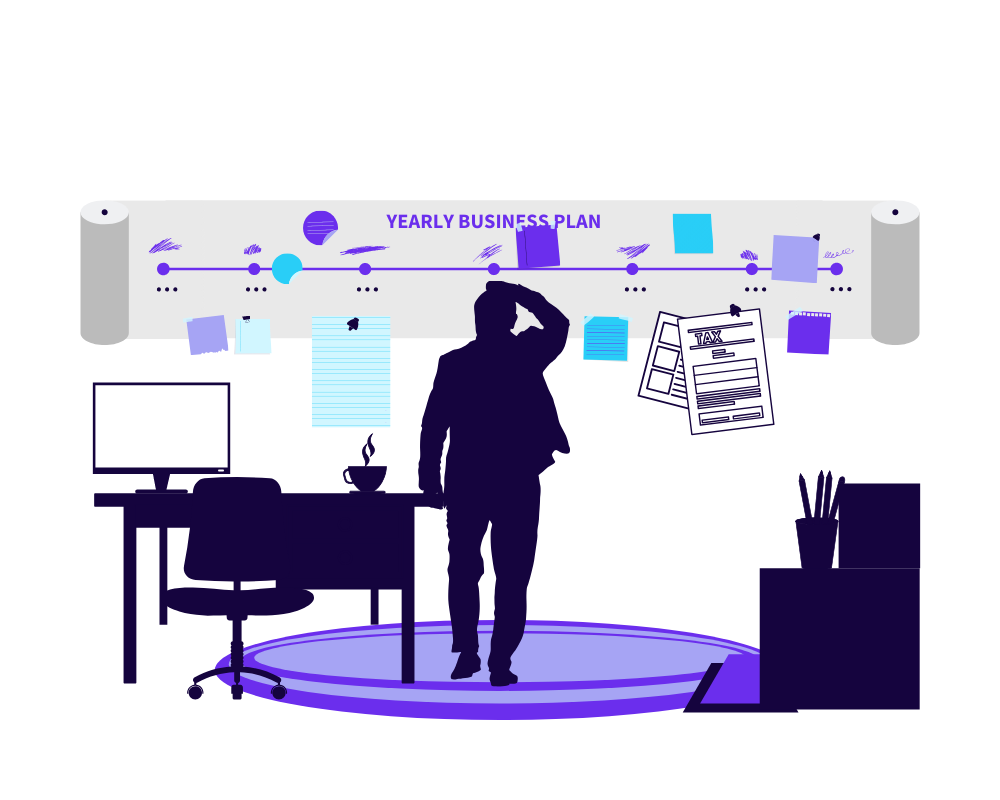
To register your business, your first step will vary depending on your location. In the U.S., for example, you start with registering with your federal, state, and local agencies for small businesses, all of which can be found in this handy guide from the U.S. Small Business Administration. From there, you’ll be asked to verify you’re in accordance with federal and state requirements for business insurance and business taxes. That way, not only is your business legitimate. It’s also covered from a variety of small business liabilities.
To learn more about the process for registering your speaking business, find your country in the list below. This guide might be short, but the government links below are full of details – I promise.
Constructing Your Speaking Website
After registering your speaking business, the next step is to make it visible by building a website. Your website is important for a few reasons, including the increased visibility you have when your business is accessible online. However it also acts as a sort of catch-all for information about you and your speaking business. If any event planner needs your contact information, it’s on the website. Your program details? They’re on the website. Basically, if there’s anything someone would need to know before contacting you about their event, your website should cover it and act as a salesperson for you. That way, your services can sell themselves. Plus, you won’t have to spend more time on the phone selling than you absolutely need to.
Altogether, there are three basic components to building a website: your domain registrar, your domain host, and the website builder itself. First, your domain registrar is simply the platform from which you purchased your URL (“yournamehere.com” for example). The second piece, your domain host, is the platform that supports your URL and keeps it visible on the web. Lastly, your website builder is the editing platform that allows you to design your website, so that it looks and feels like you. Together, if managed well, these components allow for a robust and well-designed website. Again, this is the goal, as a website should act like a sales person for your speaking business.
Whether or not you choose to build your website yourself is entirely up to you. Regardless of your choice, the important thing to remember is that a website only gives back what you put into it, so take care of your website diligently. Below are our recommendations, from the SpeakerFlow team’s experience, to get you started.
Website Resources
Domain Registration Platforms:
Domain Hosts:
Website Building Platforms:
Website Services (if you’d rather hire someone to build your website for you):
Organizing Your Speaking Collateral
Finally, before we dive into how to become a motivational speaker, from a sales standpoint, there’s one final area to organize. I’m talking about your speaking collateral, or, in other words, all of the odds and ends that event organizers will ask for when considering you or hiring you for their event. Even if you’re not yet actively selling, preparing these materials doesn’t just save you time later. It also shows event organizers that you mean business and want to hold up your end of the deal. This makes hiring you a no-brainer, even if you’re still a relatively new speaker. After all, who doesn’t love working with people that have their sh*t together? Am I right?
Although there are bound to be things that pop up later, there are a few pieces of collateral that you’re guaranteed to need. These include your speaker bio (Check!), your list of A/V requirements (i.e. the list of tech you need to make your presentation run smoothly, such as a laptop and lapel mic), and your speaker one sheet. The last of these, your acts as a sort of summary of your speaking business. Because of this, it has to showcase your experience and credentials as well as the results your clients gain from working with you. In short, your one sheet is a collage of almost everything we’ve covered so far. It tells the event organizer everything they need to know about you, and, consequently, can play a huge role in closing a sale.
Yet again, this is another area I could talk endlessly about. For now, I’ll leave it at that, but, for specific tips and tricks, check out SpeakerFlow’s “6 Secrets for Creating a Killer One Sheet”.
[hubspot type=cta portal=5815852 id=e68abcd9-8ad0-4673-81d2-450b59a97afc]
Master your sales process and strategy.
Admittedly, mastering how to become a motivational speaker takes a lot of prep work. That said, at this point, we’re half way through it, so give yourself a pat on the back! Generally, within the SpeakerFlow team, we break speaking businesses into three main areas: operations, sales, and marketing, the first of which we’ve already covered. Now, let’s talk about sales and how to become a motivational speaker that doesn’t just “get by” in their business but gets booked effortlessly. 👏
Building Your Ideal Client Profile

To start your sales process, first, look at your message and define your ideal client profile (ICP). If you haven’t heard the term before, an ICP is essentially a fictitious persona that represents your perfect client. It includes a variety of details, such as their company’s size and revenue, their geographic location, and their industry. Combined, these details help you to narrow your focus when selling your services. That way, you’re not spreading yourself too thin and your leads are more likely to close.
Likewise, when considering inbound leads, an ICP also allows you to compare them to your ideal client. Are they in your focus industry? Are they large enough to afford your speaking fee? Do they have any events coming up? All of these questions, when compared to your ICP, give you a clear answer as to whether that lead deserves your time and energy or it’s not a good fit.
Defining Your Speaking Fee
On top of your ICP, the next step in how to become a motivational speaker is one of the trickiest things to tackle: your speaking fee. Throughout the speaking industry, the average speaking fee varies greatly. Depending on who you ask, you can hear starting recommendations anywhere from zero to a few thousand dollars. Fortunately, even if you’re a brand new speaker, you don’t necessarily have to start speaking for free. In fact, with our own clients, we very rarely recommend that. After all, you’re worth more than that, simply because of your expertise!
Above all, the goal of your speaking business is to provide value that is equal to your fee. For most motivational speakers, this means starting off with a fee of a few thousand dollars per keynote speech. This makes the trip worth your time while also not breaking the back for your event host. More importantly, remember that it’s also just a starting point. The more you speak and the more glowing testimonials you get, the more you’ll be able to charge. There’s also a ton of things you can do as your speaking business grows, so you can test the limits of your fee. Although it may be frustrating to start small, speaker after speaker has proven that if you work hard and just focus on building your experience, the money and the reputation will come in time.
Planning Your Sales Process
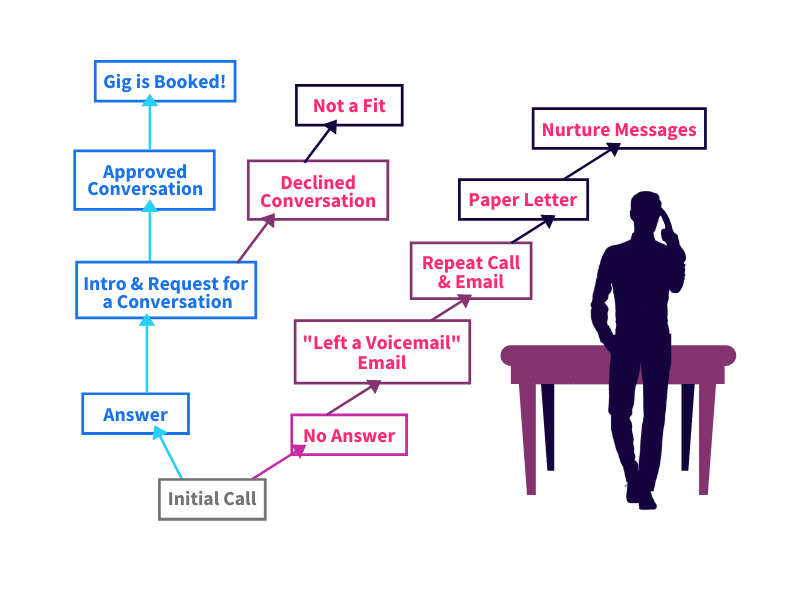
Finally, after defining who you are selling to and how much you charge, the final step in your sales prep is outlining your sales process, from start to finish. For most speakers, this process starts with a call to an event organizer. After that, if they answer, it turns into a conversation about their event and whether or not you would be a good fit for them. If they don’t answer, you would then send them an email, mentioning that they missed your call.
From there, the most basic sales process (shown on the right) branches into two options: a sale or a loss. In the case of a sale, you’re a good fit for the event and a contract is signed. In the case of a loss, one of a few things can happen. You can either (a) find out you’re not a good fit, (b) not hear back from them after that initial email, or (c) be refused a conversation with an event organizer, even after getting someone on the phone. Ultimately, your path down each of these branches is determined most by your ability to follow up with the leads you’re pursuing until you get a “yes” or a “no”. That way, you don’t miss any upcoming speaking opportunities, even with a busy schedule.
In total, your ICP, your fee, and your process are just the start of a robust and well-crafted sales process. For more information about the other components of sales, such as tracking sales metrics and hiring a sales representative, check out our Ultimate Guide to Booking Speaking Gigs.
Promote your personal brand everywhere you can.
Now that the majority of the prepwork is done, it’s time to strut your stuff…virtually, that is. Building your online presence, like your website, is key to managing a speaking business, especially if you’re starting from scratch. Not only does an online presence give you an air of legitimacy (as everything online acts as evidence). It also allows event organizers to see social proof for your skills. From client testimonials to your academic insights in your focus industry, all of this proof makes you more hireable, without question. Considering this, there are – surprise, surprise – a few primary areas into which it’s wise to invest time and energy from Day 1.
Establishing Your Social Media Presence
First, when learning how to become a motivational speaker, remember that you’re there to motivate your audience on and off-stage. One of the most obvious and widest-reaching ways to do this is through social media. Over the last decade a half, especially, the use of social media has exploded worldwide. From celebrities to grade schoolers, it can seem like everyone has an account on one platform or another. Admittedly, while this can be overwhelming, this doesn’t just get your message in front of your followers. It also allows you to get your message in front of new audiences, as existing fans share your posts with their networks. Because of that, even if you’re not a huge fan of social media, it can pay off big-time to post on a regular basis.
Among speakers, there are four main platforms used to share speaking business content, namely Facebook, LinkedIn, Twitter, and Instagram. For the first two of these, Facebook and Linkedin, best practice typically involves creating a profile for yourself and an adjoining “page” for your speaking business specifically. This allows you to distance yourself from the business a bit. That way, people can follow your business, even if they aren’t connected with you, personally. For the other two platforms, Twitter and Instagram, these uses are combined. In other words, for these platforms, you manage business and personal posts through a single profile rather than two separate pages, allowing for a more relaxed and personal online persona.
Overall, there’s a great deal of minutia to know in managing these accounts. Although I’ll keep it short and sweet here, you can find more details about leveraging social media for your business in our marketing handbook, How To Market Yourself As A Speaker: The Ultimate Guide.
Kickstarting Your Content Strategy

Next, if you want to master how to become a motivational speaker, you also have to master your message. Besides sharing your insights on social media, this also means creating content. I’m talking about blogs, podcasts, videos, anything that you can share online to provide information. Although they can be time-consuming, each of these channels provides you with a space to share your expertise and show that you are an expert first and speaker second. This makes you a more desirable hire, from an event organizer perspective, and a more valuable resource, from your audience’s perspective. Additionally, in creating content, you also create valuable information to share with your social followers, boosting your presence on those platforms as well.
All in all, depending on the media you want to create, the features of a high-quality final product will vary. Although we cover them, in large part, in the aforementioned guide to speaker marketing, there are also plenty of experts for which content creation is their main skill. Below are some of SpeakerFlow’s team favorites.
- Nate Woodbury’s Guide to YouTube Strategy
- HubSpot’s “YouTube Marketing: A Complete Guide to Creating, Promoting, and Optimizing Your Video Content”
- Backlinko’s “How to Write Blog Post: The Definitive Guide”
- SpeakerFlow’s “Why You’re Losing Money By Ignoring Podcasts (And How To Change That)”
Implementing Multi-Channel Marketing
From a marketing standpoint, the final piece of the puzzle is sharing, sharing, sharing. We’ve touched on it a few times, but the greatest way to maximize your exposure and the reach of your content is to share it across platforms. This includes your social profiles, blog, and podcast, among other areas. In simplest terms, this practice of sharing from platform to platform is called multi-channel marketing.
In a previous blog, The Basics Of Multi-Channel Marketing For Speaking Business Owners, we cover this in detail. For our purposes here, the short version of a multi-channel marketing strategy involves repurposing your content so that it can be shared across platforms. For example, when you record audio for a podcast episode, you can also record video to share to your YouTube channel. From there, you can create a blog post, explaining the topic of your podcast in more detail and including links to both the podcast audio and the YouTube video. Lastly, all of these links can be shared on your social channels. That way, whether someone finds your on your blog, social media channels, YouTube channel, or podcast, they’re automatically connected to all four areas of your speaking business.
All of this effort, while detailed, not only makes you more likely to appear in front of your ideal audience. It also puts you in front of event organizers, as they’re scrolling through social media or looking for resources in your mutually targeted industry. Because of this, a little effort can go a long way.
Focus on consistent improvements.
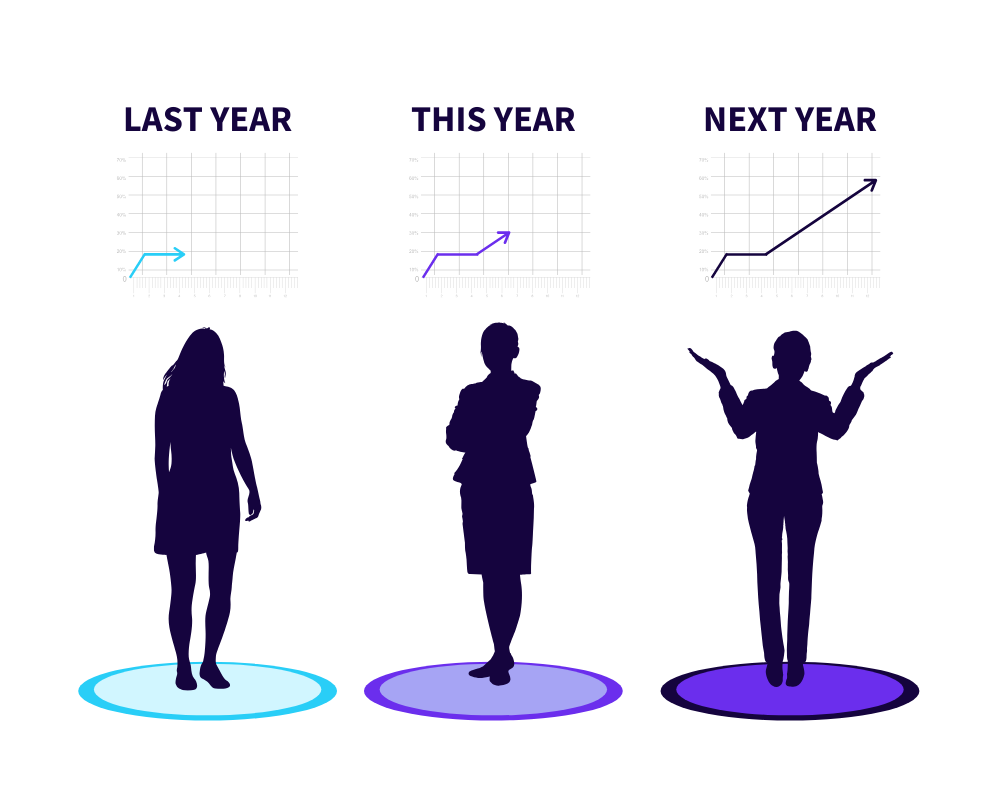
Finally, the last component of how to become a motivational speaker is, quite simply, consistency. When it comes to building a speaking business, it’s tempting to want to start everything off perfectly. However, no matter how much you prepare, that simply isn’t realistic. As your business grows and you sell to more and more event organizers, you’ll find areas of your business or your sales process, specifically, that need a little tender loving care. From there, you can make changes and adjustments, so that you’re more easily able to manage your business in the future.
Ultimately, the most important thing you can do, as a motivational speaker, is remember the very thing many motivational speakers tell their audiences: no one is perfect! Even the most experienced, well-known, and wealthy speakers have somewhere they can improve. Whether it’s their speaking style, their brand design, or the management of their speaking business team, there’s no one-size-fits-all business plan for speakers.
In light of that, hopefully, this guide gives you a toolbox for how to become a motivational speaker without too much stress or uncertainty. For constant updates about managing a speaking business and resources to make it easier, subscribe to our blog! We’re all about sharing resources and insights from our own network in the speaking industry. That way, even if you don’t know where to start, we have you covered. 😊


